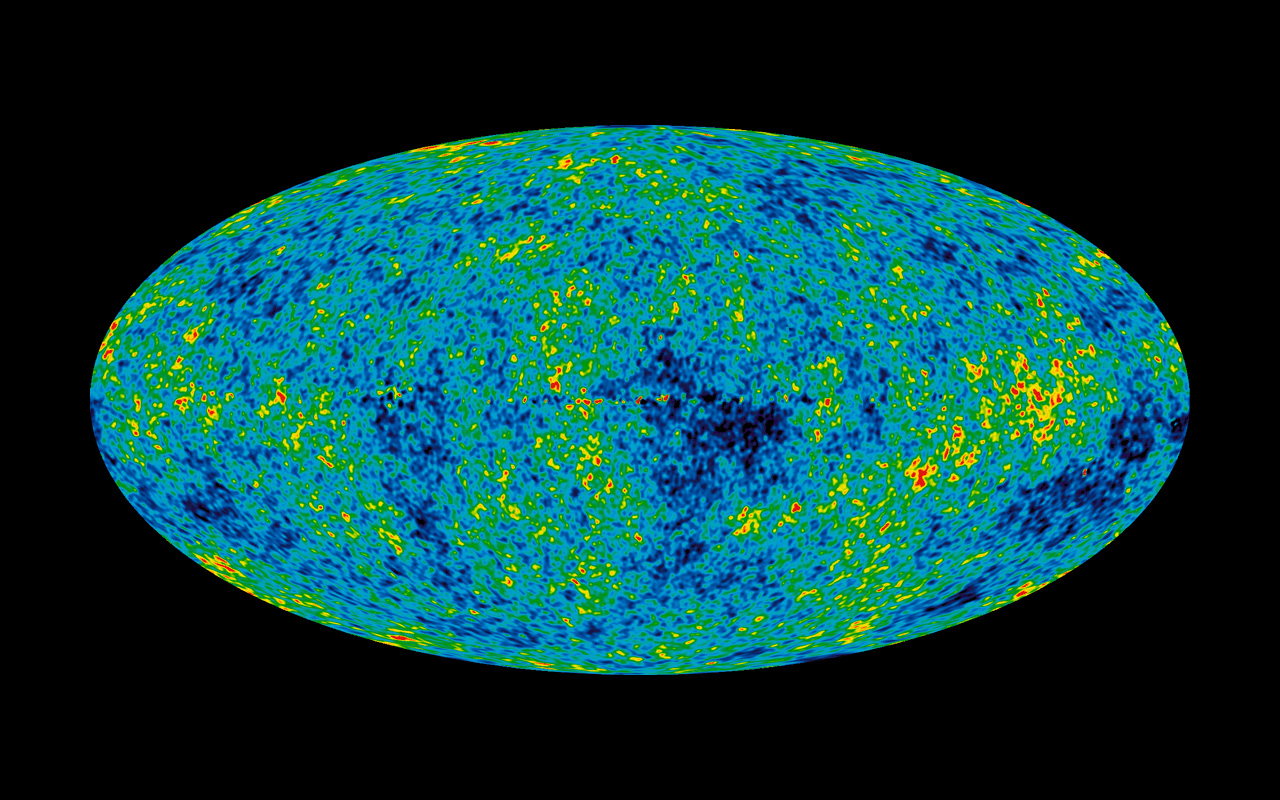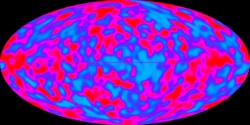 Completed Microwave Map of the Universe Image Credit: NASA |
| Scientists announced this week that the mission of the Wilkinson Microwave Anisotropy Probe (WMAP) has been completed. The last set of observations were downloaded on 20 August 2010, and researchers are compiling the final results. The satellite was placed in a permanent parking orbit around the sun on 8 September 2010.
WMAP was launched on 30 June 2001 and placed into an orbit around SEL-2, the second Sun-Earth Lagrange point. SEL-2 lies 1,500,000 kilometers beyond the Earth on a line from the Sun to the Earth. WMAP was the first spacecraft to occupy this location. SEL-2 is extremely cold, shaded from the Sun’s activity by the Earth’s shadow and ideal as an astronomical location in space. In 2009, the Herschel Space Observatory and Planck space observatory took up residence at SEL-2. They will be joined in 2014 or 2015 by the James Webb Space Telescope. First detected in 1964, the cosmic microwave background (CMB) radiation (television “snow” – before cable), is the remnants of the extremely hot radiation from the big-bang, now cooled to almost absolute zero after 13.73 billions years of the expansion of the universe. It is a pattern frozen in place when the cosmos was only 380,000 years old. WMAP The Planck observatory is currently making high resolution measurements of both the total intensity and polarization of the primordial CMB anisotropies that were first observed by COBE and WMAP. The observations made by WMAP are the most accurate to date and have allowed scientists to rule out several “inflation” models about what happened in the first trillionths of a second during the birth of the cosmos, while supplying support for several other models:
Dark energy is the force driving the galaxies in the universe apart at an ever increasing rate. At some point in the future, inhabitants of the Milky Way will not be able to see any other objects in the sky. These entities will conclude that they are at the center of the universe, and will have no information about the big bang and the creation of the cosmos as we know it today. |



















